Jan 02, 2026
Jan 02, 2026
Other Miscellaneous Civilizations
In the previous parts of this series, almost all important civilizations were dealt with that evolved and flourished to a certain glory during the long human history with unique social, cultural and religious attributes on this green planet but lost at some point owing to unfavourable climatic, geopolitical or any other reasons. This inter alia included the Chinese civilization, also known as the Middle Kingdom in history, where the population constantly experienced major upheavals owing to its insatiable greed for territory and violent means in the ancient and modern history. On the other hand, the Indian civilization with its Sanatana culture is perhaps the only exception having borne the brunt of barbarians, Greek and Islamic invaders, as also Muslim and colonial exploitation and misrule for centuries yet was able to survive and preserve the ancient civilizational attributes while simultaneously imbibing new features and attributes through exposure from alien cultures and traditions.
Important lost civilizations include the likes of Sumerian, Greek, Roman, Persian, Egypt, Assyrians, Mayan, and so on. Besides, there is rather a long list of civilizations that existed at some point of time in the ancient past in the vast area or a limited geographical expanse independent of the aforesaid mentioned ones but were gradually or suddenly lost and the exact reasons are not well known till date in many cases. Such human populations existed as a distinct civilization, an empire or a group of socio-cultural identity in various nooks and corners of the world and were lost either owing to barbaric invasions of the potential powerful enemies, or in post-Christ era with the onslaught of the radical and ultra elements of the two Abrahamic religions viz. Christianity and Islam or even adverse climatic changes in the region. In the current and concluding part, the author proposes to briefly deal with some of the identified and more prominent such civilizational and cultural entities as also the distinct reasons why Hinduism is now treated as the most ancient surviving civilization.
The Khmer Empire
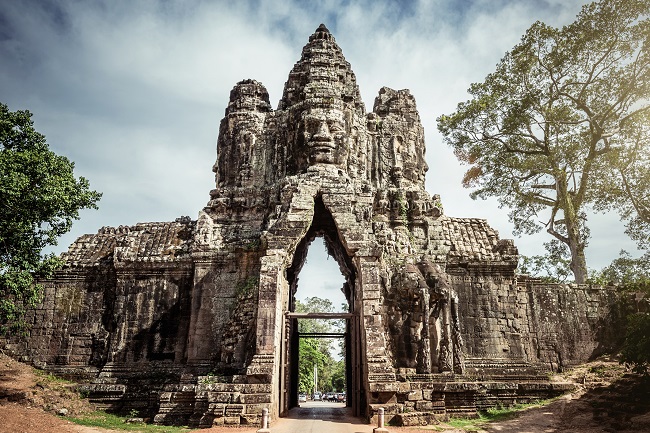
The Khmer is now identified more as an area called Angkor Wat, which was in all probability the metropolis of Angkor once upon a time. The Khmer or the Angkorian Empire was a Hindu-Buddhist empire in Southeast Asia from the 9th to 15th centuries CE largely spread over the region what is known as Cambodia today. It is widely believed that the empire grew from the earlier Funan and Chenla cultures that at one point inhabited large parts of the mainland Southeast Asia and Southern China. The beginning of the Khmer era is often counted with the King Jayavarman II declaring self as chakravartin (i.e. universal ruler, at par with emperor) in the Phnom Kulen Mountains followed by many successors and notable rulers of the clan. During its hay days, the empire is believed to have been larger than the Byzantine Empire and it finally ended in 1431 CE when the Siamese Ayutthaya kingdom captured the Angkor.
Currently, the magnificent monuments of the Angkor Wat and Bayon represent the testimony of the immense prosperity and power, architectural grandeur, notable art and culture, that it was once upon a time. The Satellite imageries suggest the Angkor being one of the most extensive pre-industrial urban complex in the world. From the Angkor Wat ruins, the experts surmise that at one time, the Angkor Wat with its enormous temple complex occupying over 400 acres was part of a metropolis probably larger than modern age New York City. The exact reason as to why the city was ruined has remained a mystery till now and several possible explanations are advanced by the scholars. What generally believed is that the prolonged overfarming, spells of drought plague epidemic and constant war weakened the empire causing scarcity of resources. Hence the Thai people ultimately claimed it and the region gave rise to the nationalities of Cambodia, Vietnam, Myanmar, etc, owing to subsequent socio-political events and changes.
Anasazi Culture

The Anasazi people, popularly also known as ancestral Puebloans, were ancient Native Americans inhabitants of the modern age US Four-corners region i.e. the parts of the Southwestern United States comprising of the southwestern corner of Colorado, southeastern corner of Utah, northeastern corner of Arizona, and northwestern corner of New Mexico. The archaeologists differ in their opinion about the emergence of this culture but there is larger consensus about the Pecos Classification that suggest about their emergence around twelfth century BCE. Based on the records of past excavations and explorations, scholars identify Anasazi people as the forerunners of the present age Pueblo people.
The ancient Anasazi people lived in a range of modified structures such as a small family pit house, large house clans, grand pueblos as well as cliff-sited dwellings for self-protection and safety from enemies. They are believed to have a distinct knowledge of celestial bodies which were so often found in their architecture and used the Kiva, a congregational space, mostly for the community ceremonies and get together. Currently, the UNESCO has declared three sites in US as the world heritage sites dedicated to the Pueblos. The exact cause of their disappearance is not known; instead, it is widely believed that they left their homeland in the 12th and 13th centuries in small groups to other destinations.
Mycenaean Civilization
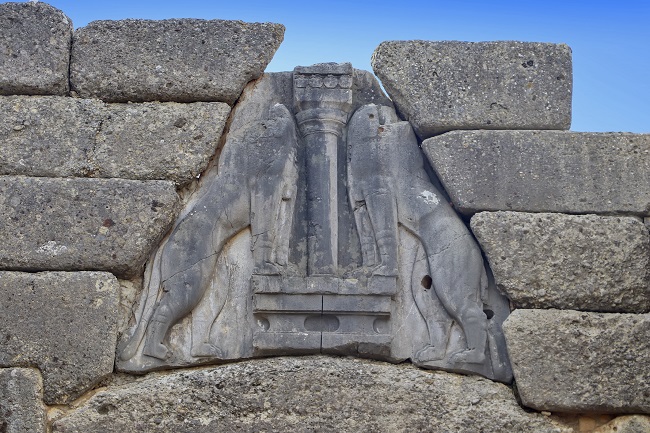
This one is a Bronze Age civilization that evolved and prospered between 1750 to 1050 BCE in the southern parts of the ancient Greece. Apparently evolved in the mainland Greece, the Mycenaean people are considered to have developed into an advanced and sophisticated culture centred at Mycenae (now an archaeological site), spread over to parts of Central Greece and settlements appearing in Epirus, Macedonia, islands of the Aegean Sea and the south-west coast of Asia Minor. The Mycenaean society was dominated by the elite warrior class and organized in a network of the palace-centred small states with a rigid hierarchical, socio-political and economic system. Usually, the head of these society-based states used to be a king known as wanax.
Available accounts suggest that the Mycenaean people were also a powerful naval force and successful traders. How they declined is an unknown mystery, though invasion, regional earthquakes, or civil unrest are often put forth reasons. They are believed to have successfully introduced many innovations in the areas of architecture, engineering and military buildup with their trade spread over to the vast areas of the Mediterranean. Also their syllabic script, the Linear B, is among the first documented records of the Indo-European Greek language while they exercised polytheism worshipping several deities. The Mycenaean civilization was lost with the end of Bronze Age culture and several theories about their collapse inter alia include the Dorian invasion, barbaric activities by the Sea Peoples as well as natural disasters and extreme climatic changes.
Rapa Nui Culture
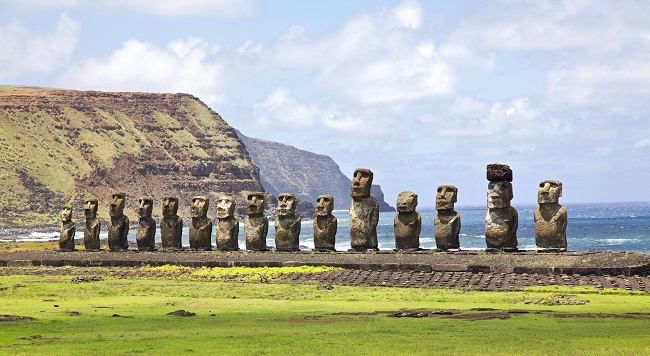
The Rapa Nui were the Polynesian people aboriginal or native to Easter Island, an island and special territory of Chile in the Pacific Ocean at the southeastern most point of the Polynesian Triangle in Oceania. Not much is known about the ancient Rapa Nui people, more popularly known as the Eastern Islanders, but scholars and researchers believe that majority of them lived in villages and were artists and artisans of great skill, capable of building impressive heads (Moai) which were attached to immense stone structures and tools. Europeans started arriving on island in early eighteenth century CE, following which the Rapa Nui culture declined. The main reason of their decline is ascribed to the over-exploitation of the Island’s resources and environment, more significantly large scale deforestation by cutting of nearly all trees. The imbalance caused due to population and over-exploitation of timber and food resources, and possibly some climatic changes too, led to collapse of the Rapa Nui society with majority population migrating elsewhere. As of 2017 census, about eight thousand descendants of native Polynesian people were still living in villages on the sheltered west coast.
Aksumite Empire
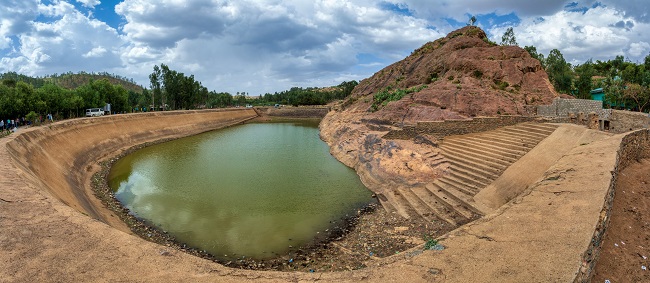
The Aksumite Empire or the Kingdom of Aksum was located in the Northeast Africa and Southern Arabia encompassing what is present day northern Ethiopia, the State of Eritrea, northern Djibouti and eastern Sudan spanning between the age of classical antiquity to middle ages. The Kingdom of Aksum was among the great powers of the ancient world for a long time that continued expanding their area of influence having conquering several territories, minted own coins, developed own alphabets, and built obelisks, which were tall, four-sided, narrow tapering monuments taking a pyramid-like shape or pyramidion. The famous Obelisk of Axum stands even today as a testimony of their building skills. Axum remained the capital of kingdom for long which was later relocated to Jarma during the ninth century owing to recurring enemy invasions and declining trade.
The decline of kingdom began around the 7th century, with tough trade and economic competition and threat from the powerful and influential Persian Empire. The constant threats from Persian and later growing Islamic interference as also conversion to Christianity in the region gradually mage the Aksumite Empire weak and the population in the city of Axum and other major cities shrank. Scholars believe that adverse environmental impact and internal development had also contributed to their decline. Consequently, the last three centuries of Aksumite Empire is considered as the Dark Age for them and the kingdom collapsed around 960 CE and Ethiopia remained an obscure and isolated region in rest of the middle ages. However, successor the Zagwe dynasty and later the Solomonic dynasty did carry a lot of Aksumite cultural influence.
The Clovis Culture
Scholars believe that the Clovis is the oldest culture of North America that dates back at least to 12 to 13 thousand years regarding them as precursors of many other later cultures and civilizations in the continent. It was so named apparently due to heavy leaf-shaped stone spearheads (artifact named Clovis-points) recovered from the archaeological site near Clovis, New Mexico in Central America during 1936-37. The Clovis people are regarded as the early human inhabitants and ancestors of the most Native American people although certain other findings cast doubts to about this theory. People used distinct stone and bone tools and are generally believed to have hunted down mammoths to extinctions as well as some other mammal species such as bison, mastodon, gomphotheres, and so on. Naturally, any written records do not exist about them and whatever information is gathered is based on some archaeological findings since recovered from several sites in Americas. Several hypotheses have been put forth about their decline and extinction which inter alia include the localized Younger Dryas i.e. the return to glacial conditions temporarily reversing the gradual climatic warming in certain regions.
Catalhoyuk Settlements
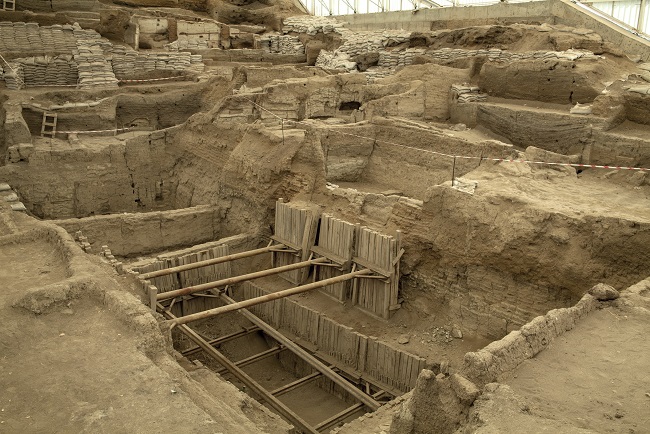
Catalhoyuk were a large Neolithic and Chalcolithic settlements in the Southern Anatolia, also known as Asia Minor, the land mass of which largely constitutes most of the territory of the modern age Turkey. They are believed to have flourished between 7,500 – 6,400 BCE and now the corresponding archaeological site has been declared as a UNESCO World Heritage site from July 2012. Excavations have revealed eighteen layers of buildings signifying several stages of settlements in the city of Catalhoyuk comprised almost entirely of residential buildings. Inhabitants apparently lived in mudbrick houses that were crammed together in an aggregate structure. Scholars have estimated a population range of about five to seven thousand living in every large clustered society. The city notably presented features like a hive with no roads or pathways marks found around.
Catalhoyuk present strong possibility of an egalitarian society having no houses with distinctive features suggesting absence of royalty or religious hierarchy. Apparently, both men and women had equal social status and nutritional considerations at par. The findings of disarticulated bones and graves suggest that the people of Catalhoyuk buried their dead within the population itself. Such human remains have been found in pits beneath the floors, more especially beneath hearths and platforms within the main rooms. Also vivid murals and figurines are found on the interior as well as exterior walls throughout the settlement. Some female figurines with distinctive features, carved and molded from marble or limestone, etc., appear to represent a prominent female deity, some sort of a Mother Goddess, although male deities too existed. Owing to many peculiarities, some western people even consider it the first urbn settlement in the world.
Nabta Playa People
Now an archaeological site of at least 7500 BCE or more vintage, Nabta Playa was once a largely drained basin in the Nubian Desert about eight kilometres south from Cairo and some hundred kilometre west of Abu Simbel in Southern Egypt. According to the archaeological findings, this was inhabited by the New Stone Age people living more organized than their contemporaries in and around Nile Valley. The Nabta Playa people lived in rough stone built houses in planned pattern with deeply dug wells for potable water availability. They probably occupied the region only seasonally so long the local lakes and water reservoirs had plenty water available for their grazing cattle. The people engaged in farming, reared animals and created ceramic vessels probably about nine thousand years ago. Another important finding of archaeologists from the ruins includes stone circles resembling Stonehenge. These circles have led scholars and researchers to believe that the indigenous inhabitants of the region had significantly advanced knowledge of astronomy too.
Cucuteni-Trypillian Culture
The Cucuteni–Trypillia culture or Tripolye culture was a Neolithic–Chalcolithic culture (5500 to 2750 BCE) of the Eastern Europe spread over from the Carpathian Mountains to the Dniester and Dnieper regions, centered around the modern-day Moldova and extending to major parts of western Ukraine and northeastern Romania. Their settlements were rather small with high density of population with some of them inhabited by probably as many as fourty-six thousand people in Siret (northeastern Romania), Prut River and Dniester River valleys. Perhaps the most notable feature of this culture was the periodical destruction of settlements each with average life of 60-80 years and reconstruction atop the earlier habitations although preserving the shape and orientation of the old buildings. For instance, Poduri is one location in Romania where as many as thirteen habitation levels were identified by the archaeologists. The Cucuteni-Tripillian people mainly relied on farming and adverse extreme climatic changes most probably led to the collapse of these people. According to yet another theory, the people of the Kurgan culture from the Pontic-Caspian steppe were responsible for the destruction of this culture through a series of invasions.
Minoan Civilization
The Minoan was a Bronze Age Aegean civilization which evolved on the Crete Island and Aegean Islands in the Mediterranean around 3,500 BCE, metamorphosed into a complex urban civilization by 2000 BCE, then its downfall began around 1450 BCE, and it collapsed by 1100 BCE. It is often rated as the first advanced civilization in Europe, giving rise to a number of massive building complexes, sophisticated art and writing systems, and trade and economic activities around much of the Mediterranean region. The name Minoan is derived from the mythical King Minos and the civilization was largely revealed through the work of the British archaeologist Sir Arthur Evans in the beginning of the 20th century. The downfall of the civilization was probably mainly on account of a flurry of natural disasters including multiple massive earthquakes.
The Minoans were indeed an advanced civilization who built massive and high palaces, elaborate plumbing systems and paintings on walls and ceilings although the purpose of palaces as well as the system of their governance and religion, etc. are not well identified. They had extensive trade between Crete and Aegean islands as also with other contemporary Mediterranean settlements. The Minoans wrote in the Linear A script and Cretan hieroglyphs, hypothetically recognized as Minoan. During their hay days, the influence of Minoan cultural has reached to Cyclades, Old Kingdom of Egypt, Cyprus, Anatolia and Levantine coast as some preserved pieces of Minoan art have been found in such places. The reasons for their decline are not well established and various theories include major volcanic eruptions, invasions from the mainland Greece, or possibly a mix of both activities.
Cahokia Mounds
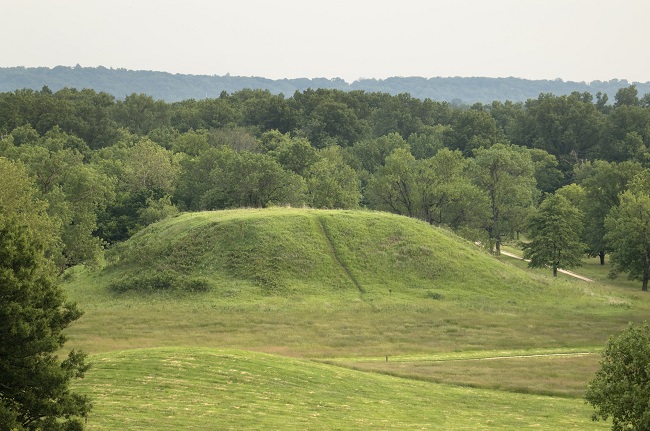
Cahokia Mounds is a historic site and a pre-Columbian Native American city across the Mississippi River near modern St. Louis, Missouri, which in all likelihood existed between 1,050 to 1,350 CE. The site covers an area of about 9 square kilometers with about eighty manmade mounds but the actual ancient city was probably much bigger. They are now considered as the largest and most complex archaeological and UNESCO World Heritage site north of the pre-Columbian cities in Mexico, where nearly fourty thousand inhabitants existed at one point of time. This represents the largest and most prominent ancient urban settlement of the Mississippian culture, which later on developed into advanced societies the much of which is now recognized as the Central and Southeastern United States. Findings of the Mill Creek chert, Cahokian style pottery, stone tools and other goods/tools at several sites suggest importance of Cahokia in extensive trade with the barter system was in vogue instead of the money exchange. Archaeologists have estimated the population of city up to fourty thousand at peak with more people living in surrounding villages having frequent interface with the main urban centre. The collapse of the city around 1350 CE is ascribed to factors like environmental degradation through overhunting, deforestation, pollution and extreme climatic changes such as droughts and flooding, or even invasion by outsiders.
Kingdom of Silla
Silla or Shilla was an ancient Korean kingdom located at the southern and central parts of the Korean Peninsula, which existed from about 57 BCE to 935 CE. Silla along with Baekje and Goguryeo formed three kingdoms of Korea. This Korean dynasty was founded by Hyeokgeose of Silla and was in succession ruled by three dynasties, namely Gyeongju Gim clan, Miryang Bak clan and Wolseong clan. During the rule of Miryang clan, the other two kingdoms of Baekje and Goguryeo were conquered and the unified Silla reigned the most of the Korean peninsula for a long time. The middle period of the Silla dynasty was characterized by the stronghold of monarchy over the nobility; however, the last hundred and fifty years of dynasty experienced constant upheavals and civil war with the rise and revolts by several aristocratic families and the monarch was reduced to a mere figurehead. Scholars argue about the rescinding of the office land system and the re-institution of the former tax village system as salary land as proof of the aristocratic dominance over the monarchy system. During the final phase in later years, the resurgent Baekje and Taebong kingdom emerged out of the unified Silla with military dominance and Goryeo dynasty replaced the latter kingdom.
The Nabatean Culture
Nabateans were ancient Arab people who inhabited the northern Arabia and southern Levant and were a distinct cultural group and political entity from fourth to second century BCE with a considerable prosperity and impact on the ancient world. The distinctive feature of their culture is finely potted painted ceramics which was later adopted into the Greco-Roman culture. The chief gods worshipped by them were Dushara and Al-Uzza of which the former was the supreme deity. While the animal sacrifice was a common practice but some evidence of human sacrifice too has been marked. The reasons for their ruin and ultimate decline was invasion and brutal treatment by Romans; while a large number of Nabateans were converted to Christianity and the remaining ones were either killed or migrated elsewhere.
The Sanxingdui Culture
Sanxingdui is an archaeological site on the UNESCO list of tentative world heritage site which represents a Bronze Age culture in modern Guanghan, Sichuan, China. Evidence about this culture was first reported in the year 1927 with unearthing of large stashes of jade relics. Subsequent archaeological excavations and a major study in 1986 revealed evidence of the existence of a walled city of approximately 1,600 BCE vintage. The archaeological findings at the site included numerous broken and carefully buried gold, bronze, jade, and pottery artefacts. The recovered Bronze objects included sculptures of humans, animal-faced sculptures, bells, decorative animals such as dragons, snakes, chicks, and birds, and axes. The available evidence suggests existence of the Sanxingdui culture which was most probably destroyed by massive earthquakes in the whole region altering the entire landscape. According to some Chinese archaeologists, the Sanxingdui culture was actually a part of the ancient kingdom of Shu, and the artefacts found at the site belonged to its early legendary kings.
Moche Civilization
Moche civilization had flourished in the northern Peru with its capital near the modern age Moche, Trujilo in the post-Christ era from early first century to 700 CE. As observed from the rich iconography and monumental architecture, the Moche civilization was comprised of several autonomous organized societies with each one functioning as an independent political entity although all of them shared a common culture and religion. It was an agriculture based civilization largely dependent on the canal-based irrigation from the Andes mountain runoff. Multiple theories have been advanced by scholars for the downfall and dextinction of the Moche civilization; the most common being the severe environmental changes. According to this school of thought, possibly a super El Nino spell caused nearly three decades of intense rains and flooding followed by another similar long spell of drought. Then depletion of resources compelled social unrest and bitter factional wars for control of the meager resources leading to ultimate ruin and collapse of the civilization.
Why Hinduism is Longest Surviving Civilization?
Unlike most other cultures and religions in various parts of the Old and New Worlds, the origin of Hinduism or the Sanatana Dharma was not linked to any particular dogma, event, prophet or group of prophets. It was more of a way of life evolved with time over a large geographical area in the South Asia that continues to be so even in the modern times. Except for certain precepts of a righteous way of living and conducting in life, it has no specific or rigid belief system that every Hindu must comply; rather, it is inclusive of so many different, sometimes even contradictory, beliefs, rituals, customs and traditions with Purushartha as its central theme comprising of elements like Dharma, Kama, Artha, and the ultimate goal of life as Moksha (liberation) by identifying Self with the eternal Brahman (God) and to achieve this end objective, it even accepts various paths. For instance, Hinduism firmly believe in one God yet not averse to the idea of worshiping its spiritual unmanifested form as well as multiple manifested forms as distinct deities.
Certain key important facts and unique features about the Hinduism originating from the scriptures and texts including the Vedas and Upanishads that differentiate it with other civilizations and are the strong points too for its continued existence involve its focus on individual, freedom of thoughts and religion, avoidance of invasion/wars on other cultures and religions, peaceful co-existence treating the entire world as part of the same family (Vasudhaiva Kutumbkam), stature and respect for women in the society and households, love and respect for the nature and natural objects, and near absence of slavery in any form. The individual focus on Purushartha and following Dharma ensures a right blend of material and spiritual life in Hinduism. Similarly, there have been great warriors and kings since ancient age in Bharatvarsha (India) but none of them ventured outside the sub-continent to invade and destroy other cultures and religions of the world. Further, Hinduism has always stood for the religious freedom and Hindus have even deified animals and plants, rivers, mountains, and so on, because of their usefulness for the survival and continuance of life on the planet. Some of the main reasons for the continued survival of Hinduism since its inception are briefly indicated as follows:
Epilogue
In the present piece and previous parts, important civilizations of the world have been briefly dealt with but the list still presents more of illustrative than a comprehensive account. It’s so because there have been numerous other distinct civilizations, empires, groups of distinct socio-cultural attributes, and even stand alone settlements in various parts of the world that evolved and prospered at various points of time but collapsed and demised owing to some known or unknown reasons. Within the limited scope and purpose of this series, it is not possible to encompass and illustrate all such lost or surviving civilizations. Also it would require much more efforts and more extensive and exhaustive study and research to captures all such civilizations.
As already mentioned earlier that the Hinduism is the only civilization which has not only been able to absorb shocks from the invading civilizations for centuries but also constantly continued to evolve throughout the period with its balanced approach towards materialism and spiritualism with the spirit of peaceful coexistence and cooperation with others – a reason why all indigenous cultures and religions of the Indian sub-continent are largely at peace. On the other hand, most of the others, especially western civilizations, have focused on materialism and self-endowment only since ancient ages, giving rise to constant conflicts, exploitation and extortion of others – reasons why most of the past civilizations vanished and the two prominent dogmatic Abrahamic religions of the modern age are at constant conflict with each-other despite similar origin, as also with others everywhere in the world.
Concluded
Images (c) istock.com
08-Jan-2023
More by : Dr. Jaipal Singh